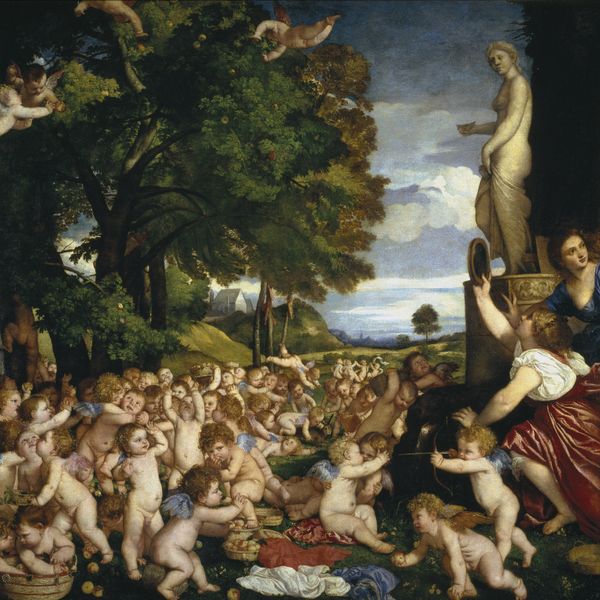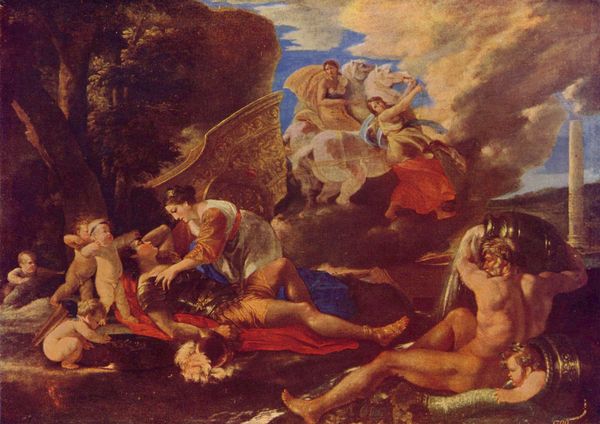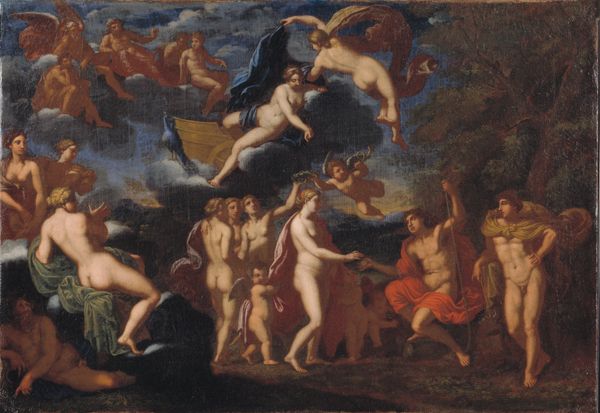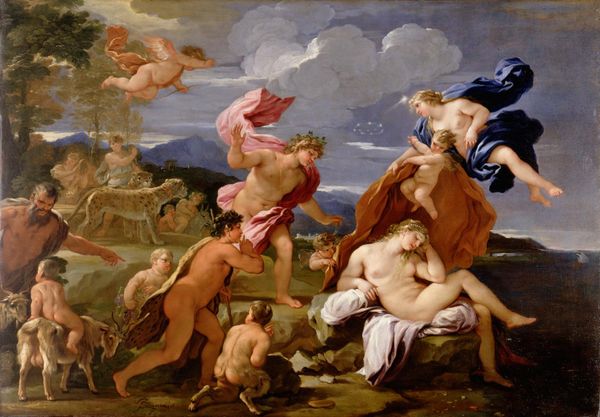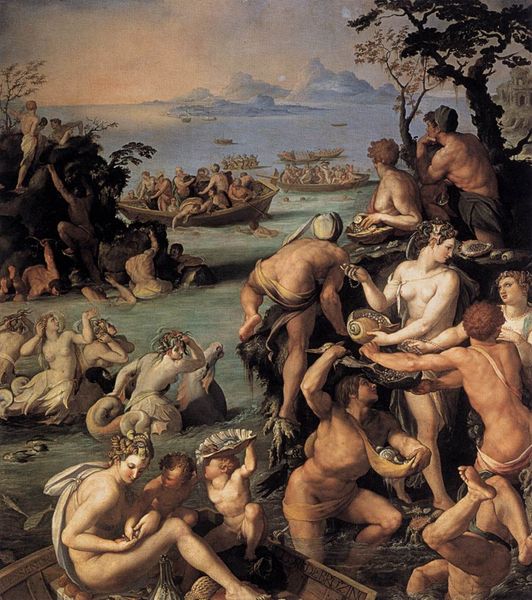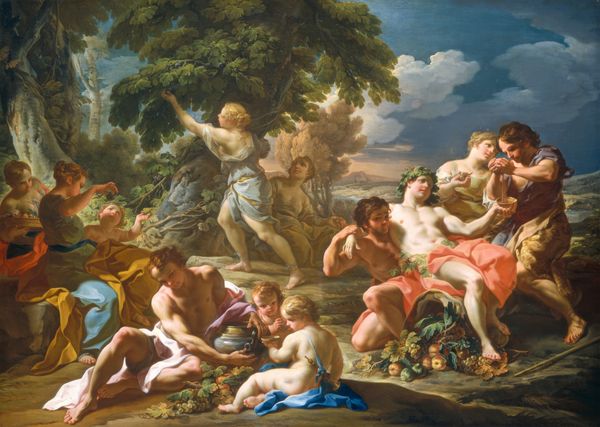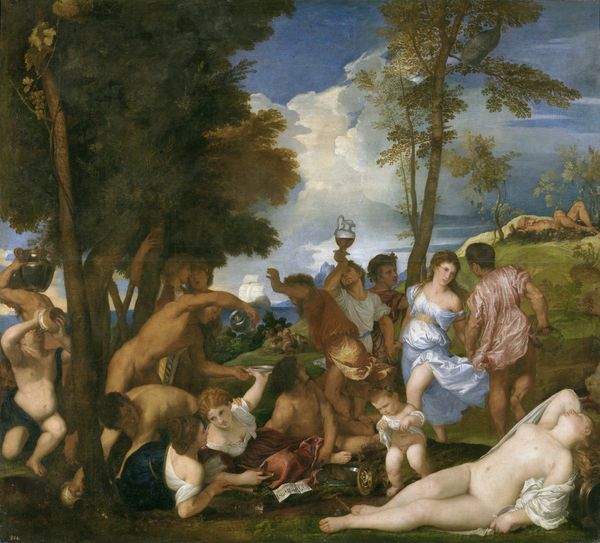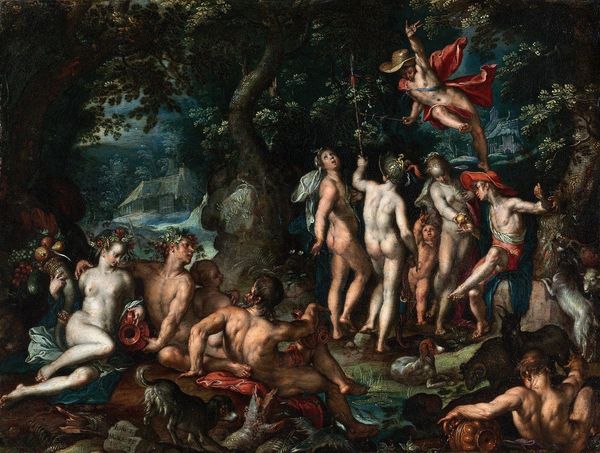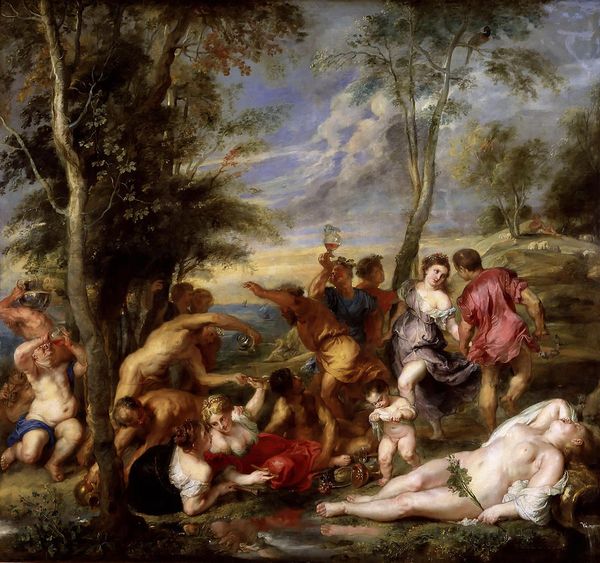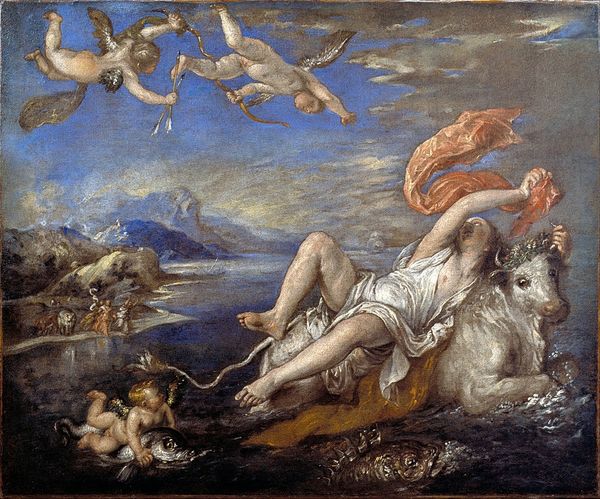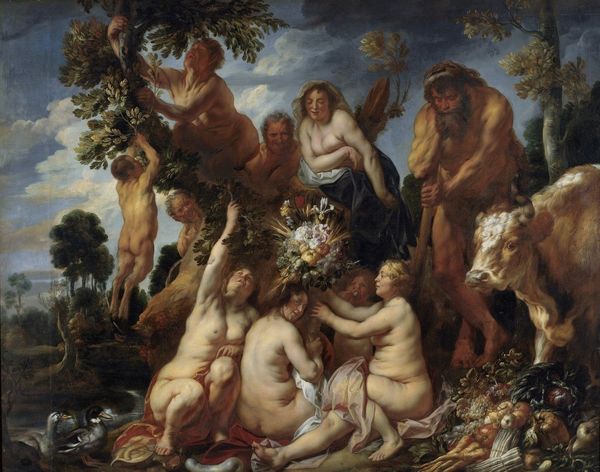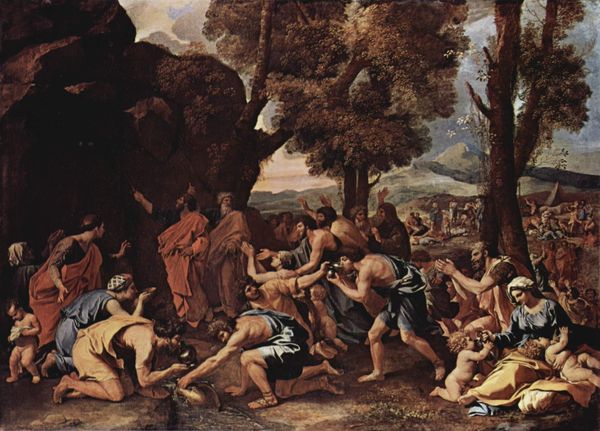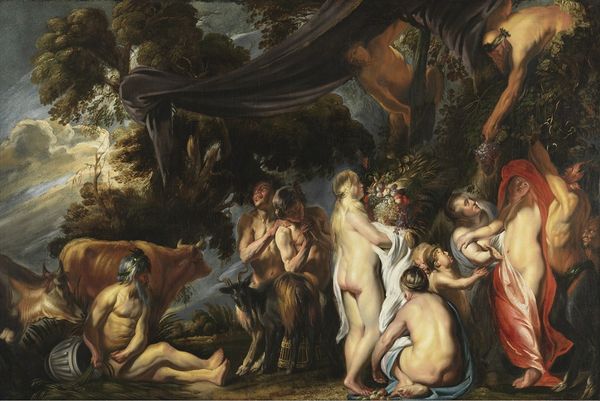
painting, oil-paint
#
allegory
#
baroque
#
painting
#
oil-paint
#
landscape
#
figuration
#
oil painting
#
roman-mythology
#
mythology
#
history-painting
Dimensions: 165 x 241 cm
Copyright: Public domain
Editor: Here we have Nicolas Poussin's "The Triumph of Flora," painted in 1629. It's currently housed at the Louvre. It's a vibrant oil painting, filled with figures and set in a lush landscape. I'm struck by how dynamic it feels, almost like a procession frozen in time. What stands out to you? Curator: Indeed. Consider the layers of meaning Poussin weaves through this celebratory image. It's not merely a scene of revelry but a carefully constructed allegory of transformation. Look at Flora herself, enthroned, representing springtime and the flourishing of nature. Around her, notice figures like Ajax, Narcissus, and Hyacinth—each transformed into a flower as a consequence of their individual tragedies. Editor: So, each figure embodies a specific myth? Curator: Precisely. Poussin uses recognizable symbols drawn from classical mythology to convey deeper moral lessons about love, loss, and rebirth. The constant visual element of figures being transformed, often sorrowfully, before they join Flora's triumphal entourage. Does the light striking specific groupings hint at the moral judgment within their mythology? Editor: I see what you mean, a cultural memory playing out before us. Is there something to read into how the cherubs are staged above Flora? Curator: Absolutely. Note their seemingly guiding gazes – directing us to view Flora's scene from a certain moral lens. Through these characters and their interwoven stories, we see the enduring power of myth to explore the human condition, echoed across time and retold. Editor: So, Poussin uses mythology not just as decoration but as a way to tap into collective understanding. Curator: Exactly. It reminds us of how these ancient stories continue to shape our understanding of beauty, mortality, and the cyclical nature of life itself, through vivid visual emblems. Editor: I'll certainly view mythological paintings differently now! It is a rich tapestry of references to reflect on!
Comments
No comments
Be the first to comment and join the conversation on the ultimate creative platform.
